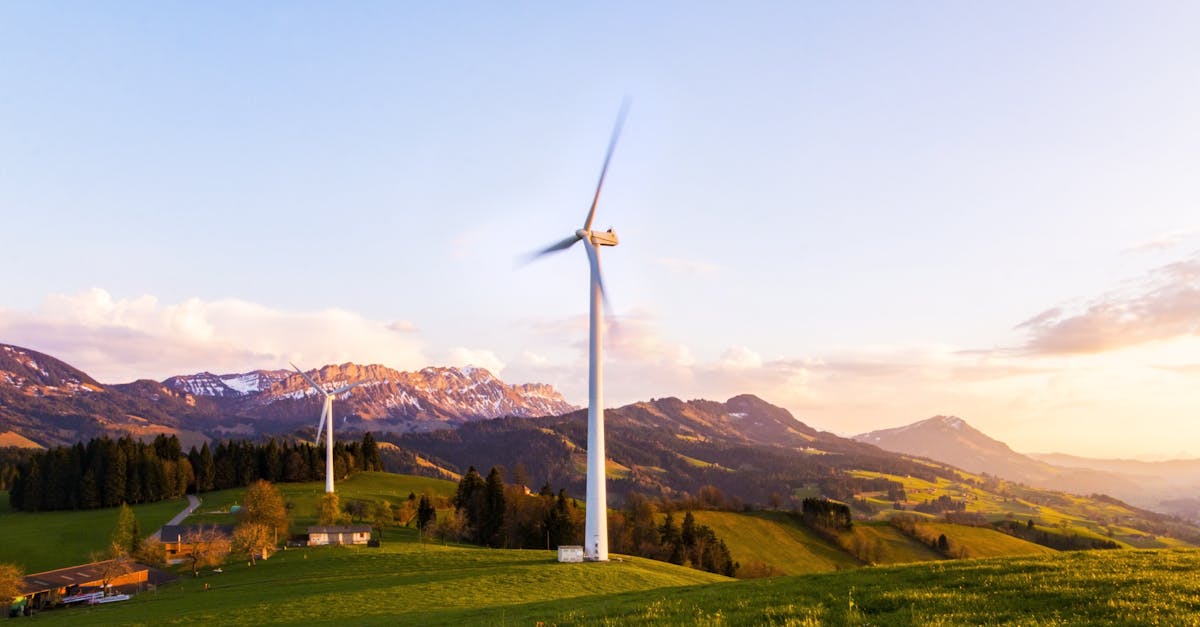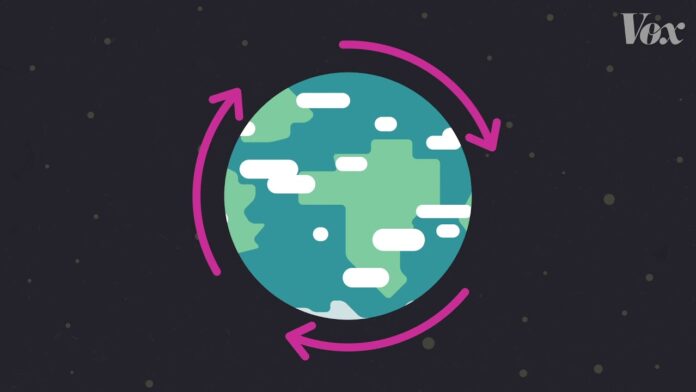In today’s fast-paced world, the demand for energy is increasing at an unprecedented rate. While traditional sources of energy such as fossil fuels have been meeting this demand, they come with significant environmental and social consequences. This has led to a global shift towards sustainable development and the use of renewable energy. Renewable energy investments, in particular, play a crucial role in this shift and are essential for achieving a sustainable future.
As we move towards a more sustainable and eco-friendly future, it is important to understand the importance, benefits, challenges, and opportunities that come with investing in renewable energy. In this article, we will delve into the world of renewable energy investments and explore its various dimensions.
Importance of Renewable Energy Investments
The world today is facing a growing number of environmental challenges, ranging from climate change to air and water pollution. These issues are largely caused by the burning of fossil fuels, which are non-renewable sources of energy. Renewable energy, on the other hand, is generated from sources that are naturally replenished, such as solar, wind, hydro, and biomass.
Investing in renewable energy is crucial for achieving sustainability, as it helps reduce our dependence on fossil fuels and mitigates their adverse impact on the environment. According to the International Energy Agency (IEA), renewable energy accounted for 26.2% of global electricity generation in 2018, with China, the United States, and India being the top three countries in terms of renewable energy investment. This shows the growing importance of renewable energy investments in the global energy landscape.
Renewable energy investments not only contribute to a cleaner environment but also bring about various social and economic benefits. By creating new job opportunities and driving economic growth, these investments play a vital role in promoting sustainable development. Moreover, renewable energy sources are abundant and widely available, providing access to affordable energy for all.
Types of Renewable Energy Sources

Renewable energy sources can be broadly classified into five categories: solar, wind, hydro, geothermal, and biomass. Each of these sources has its unique characteristics, benefits, and potential for investment.
Solar Energy
Solar energy is the most abundant source of renewable energy on Earth. It involves harnessing the power of the sun to generate electricity or heat water using photovoltaic (PV) cells or solar thermal collectors, respectively. PV cells convert sunlight directly into electricity, while solar thermal systems use the sun’s energy to heat a fluid, usually water or oil, which in turn produces steam to drive turbines and generate electricity.
One of the main advantages of solar energy is its scalability. Solar panels can be installed on various scales, from powering individual homes to large-scale utility plants. Moreover, solar energy systems have low maintenance costs and do not produce any emissions, making them an environmentally-friendly option.
Wind Energy
Wind energy involves converting the kinetic energy of wind into electricity using wind turbines. Wind has long been used as a source of energy, such as for sailing ships and grinding grains. In modern times, it is harnessed through large-scale wind farms, where numerous turbines are connected to a power grid to supply electricity to homes and businesses.
Wind energy is a clean and renewable source of energy, with no fuel costs and minimal operational expenses. It is also highly efficient, with wind turbines having a capacity factor of up to 55%, compared to coal and gas plants with a capacity factor of around 33%. However, wind energy does have some challenges, such as intermittency and uncertainty due to variable wind speeds, which can be mitigated by using energy storage systems.
Hydro Energy
Hydro energy involves harnessing the energy of moving water, such as rivers and oceans, to generate electricity. This is done by storing water in dams and releasing it through turbines, producing electricity in the process. Hydroelectric power plants can range from small-scale run-of-river systems to large dams and reservoirs.
Hydro energy is a reliable and cost-effective source of renewable energy, with low operational expenses and no fuel costs. It also has the potential for large-scale storage, making it a suitable option for balancing the grid and meeting peak demand. However, the construction of large dams can have significant environmental impacts, such as the displacement of communities and loss of wildlife habitats.
Geothermal Energy
Geothermal energy involves harnessing the heat from the Earth’s core to generate electricity or heat buildings directly. This is done by drilling wells into underground reservoirs of steam or hot water, which is then used to drive turbines or heat pumps. This type of renewable energy is mainly used in areas with tectonic activity, such as geysers and volcanoes.
Geothermal energy is a constant and reliable source of renewable energy, with minimal emissions and environmental impact. However, its development requires significant upfront investments, and the availability of suitable sites is limited.
Biomass Energy
Biomass refers to organic matter, such as wood, crops, and wastes, that can be converted into energy through various processes. These include combustion, gasification, and fermentation, which produce electricity, heat, and biofuels, respectively. Biomass energy is mainly used in the transportation sector and for heating and cooking purposes.
Biomass energy is a versatile and sustainable source of energy, with the potential for carbon neutrality when managed sustainably. However, its use can lead to deforestation and competition for land with food production, and the efficiency of biomass conversion is relatively low compared to other renewable energy sources.
Benefits of Investing in Renewable Energy

Investing in renewable energy brings about various benefits, not only for the environment but also for society and the economy. These benefits include:
Reduction of Greenhouse Gas Emissions
Greenhouse gases, such as carbon dioxide, methane, and nitrous oxide, are the main contributors to climate change. Fossil fuel combustion is a significant source of these emissions, which can be reduced by investing in renewable energy. According to the IEA, renewable energy technologies accounted for almost 2 billion tonnes of avoided carbon dioxide emissions in 2018.
Job Creation and Economic Growth
According to the International Renewable Energy Agency (IRENA), the renewable energy sector employed around 11 million people globally in 2018, a number that is expected to reach 28 million by 2050. By creating new job opportunities, especially in rural areas, renewable energy investments contribute to economic growth and poverty reduction.
Energy Security and Independence
Renewable energy sources are widely available and abundant, reducing countries’ dependence on imported fossil fuels. This not only increases their energy security but also reduces their vulnerability to price fluctuations and geopolitical tensions associated with fossil fuel trade.
Improved Public Health
The use of renewable energy leads to a cleaner environment, improving public health and reducing healthcare costs. The burning of fossil fuels produces air pollutants and greenhouse gas emissions, which have detrimental effects on human health. By replacing fossil fuels with renewable energy, we can significantly improve air quality and reduce the incidence of respiratory diseases, such as asthma and lung cancer.
Challenges and Opportunities in Renewable Energy Investments
While the benefits of investing in renewable energy are numerous, there are also challenges that need to be addressed for the sector to continue growing and reaching its full potential. These include:
High Initial Costs
One of the main challenges of renewable energy investments is the high upfront costs involved. This is especially true for large-scale projects, such as solar and wind farms, which require significant capital investments. However, as technology advances and economies of scale are achieved, the costs of renewable energy systems are decreasing, making them more financially viable.
Intermittency and Uncertainty
Renewable energy sources such as solar and wind are variable, meaning they are not available 24/7. This leads to intermittency and uncertainty in the supply of electricity, which poses a challenge for grid stability. However, this can be overcome by incorporating energy storage systems and investing in smart grids, which can adjust the demand to match the available supply.
Regulatory Barriers and Incentives
The renewable energy sector is highly regulated, with various policies, tariffs, and subsidies that can either hinder or promote investments. Governments play a crucial role in creating an enabling environment for renewable energy investments through clear regulations, incentives, and support mechanisms. This can include feed-in tariffs, tax credits, and green certificates to encourage investment in renewable energy projects.
Case Studies of Successful Renewable Energy Projects
While there are challenges associated with renewable energy investments, many successful projects have been implemented worldwide, showcasing the potential and opportunities in this sector. Here are three case studies of successful renewable energy projects:
The Three Gorges Dam, China
The Three Gorges Dam is the largest hydroelectric power plant in the world, located on the Yangtze River in China. With a capacity of 22.5 GW, it provides approximately 11% of China’s electricity needs. The project was completed in 2012 after 17 years of construction and required an investment of $37 billion. It displaced over a million people and flooded numerous villages, leading to social and environmental impacts. However, it has significantly reduced China’s dependence on fossil fuels and contributed to its economic growth.
SolarReserve’s Crescent Dunes Project, USA
The Crescent Dunes Project is a concentrated solar power (CSP) plant located in Nevada, USA. With a capacity of 110 MW, it is the first utility-scale CSP plant in the world with integrated molten salt storage. This storage system allows the plant to generate electricity 24/7, overcoming the intermittency and uncertainty associated with solar energy. The project was completed in 2015 and required an investment of $1 billion. It provides enough electricity to power around 75,000 homes and has reduced carbon dioxide emissions by 475,000 tonnes annually.
Vestas’ Horns Rev 3 Offshore Wind Farm, Denmark
The Horns Rev 3 Offshore Wind Farm is located in the North Sea, off the west coast of Denmark. With a capacity of 407 MW, it is the largest offshore wind farm in Denmark and one of the largest in the world. The project consists of 49 turbines, each with a capacity of 8.3 MW, which can provide enough electricity to power 425,000 households annually. It was completed in 2019 and required an investment of €2 billion. By using renewable energy, this project has reduced carbon dioxide emissions by over 500,000 tonnes per year.
Future Trends in Renewable Energy Investments
The future of renewable energy investments looks promising, with many trends and opportunities emerging in this sector. Some of these include:
Declining Costs of Renewable Energy Systems
According to the IEA, the costs of solar and wind energy systems are expected to decline by 15% and 35%, respectively, by 2024. This is due to advancements in technology, economies of scale, and supportive policies and incentives. As a result, investing in renewable energy will become more financially viable and attractive.
Rise of Distributed Generation
Distributed generation, also known as on-site or decentralized generation, refers to the production of electricity at or near the point of consumption. This includes rooftop solar panels, small wind turbines, and micro-hydro systems. Distributed generation is becoming increasingly popular, especially in remote and rural areas, where access to the grid is limited. This trend is expected to continue, providing opportunities for investments in small-scale renewable energy systems.
Expansion of Energy Storage Technologies
Energy storage is a crucial component of a sustainable energy system, as it can store excess energy generated from renewable sources and supply it when needed. As technology improves, the costs of energy storage systems, such as batteries and pumped hydro, are decreasing, making them more financially viable. This will enable renewable energy systems to overcome intermittency and uncertainty, making them a reliable source of electricity.
Emergence of New Technologies
The renewable energy sector is constantly evolving, with new technologies emerging to harness energy from untapped sources or increase the efficiency of existing systems. Some of these include wave and tidal energy, which use the power of ocean currents to generate electricity, and floating solar panels, which are installed on water bodies and can produce electricity without taking up land space. These new technologies provide exciting opportunities for investment in the renewable energy sector.
Conclusion
Renewable energy investments play a crucial role in promoting sustainability and mitigating the adverse effects of climate change. They bring about numerous environmental, social, and economic benefits, while also contributing to energy security and independence. However, there are challenges associated with renewable energy investments, such as high upfront costs and regulatory barriers, which need to be addressed for this sector to reach its full potential.
Looking towards the future, trends such as declining costs, expansion of energy storage technologies, and the emergence of new technologies provide exciting opportunities for investment in renewable energy. It is essential for governments, investors, and communities to work together to overcome the challenges and promote an enabling environment for the growth of the renewable energy sector. Only then can we achieve a sustainable future powered by clean and renewable energy.









